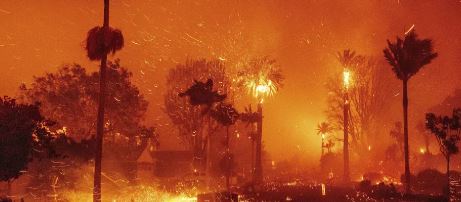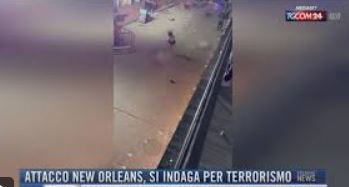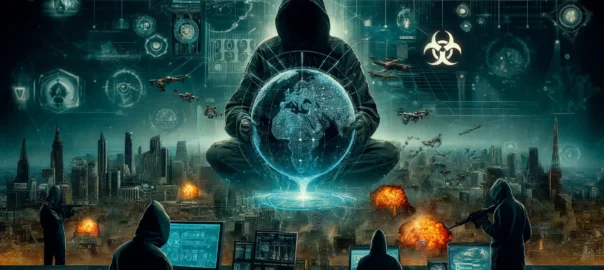Risulta al momento ancora avvolto nel mistero il movente del brutale omicidio del ricercatore italiano Alessandro Coatti, il cui corpo è stato smembrato e i resti ritrovati pochi giorni fa in tre diversi luoghi di Santa Marta, città della costa nord della Colombia.
Continue readingAll posts by Marco Lombardi
Negotiation as representation – by Giacomo Buoncompagni
Whether or not it is an ‘interlude’, as many European media say, the meeting a few hours ago between Ukrainian President Volodymyr Zelensky and the newly elected Donald Trump in front of reporters in the Oval Office turned a possible negotiation into a spectacle.
Continue readingUnderstanding Salafi-Jihadi Communication: Insights from Mujahid Mind AI – by Ali Fisher
The Nature of Salafi-Jihadi Communication: Salafi-Jihadi groups communicate based on deeply rooted theological principles. Their messaging has remained consistent over time, as evidenced by materials produced before and after major global events, such as the U.S. invasion of Afghanistan or Iraq that enabled the rise of AQ.
Continue readingLa paradossale fascinazione per il suprematismo bianco: il caso Solomon Henderson – A. Pugnana, S. Lucini e A. Bolpagni
Il 22 gennaio 2025, il diciassettenne Solomon Sahmad Charlie Henderson ha commesso uno school shooting alla Antioch High School di Nashville, Tennessee (USA). Alle 11.09, Henderson è entrato nella mensa scolastica dell’edificio scolastico e ha aperto il fuoco, ferendo un compagno e uccidendo una studentessa per poi togliersi la vita.
Continue readingFrom Data to Division 5 of 5: Artificial intelligence – by Daniele M. Barone
The Half-Measure of Human-Grounded AI Ethics. Within the context outlined thus far, as argued by Coeckelbergh and Sætra, the debate carried on by LLMs ongoing development seems to be between two main point of view: the Marxist concept of “technological determinism” and the “technological instrumentalism” or “technical orthodoxy”.
Continue readingSPOTREP. The Los Angeles wildfires: an alternative perspective – Emilio Palmieri
Huge fires have been devastating Los Angeles for days. The damage is enormous. What do we know? What don’t we know? What to think?
Continue readingL’impegno del Puntland contro le milizie jihadiste – by G. Frinchillucci
Il 31 dicembre 2024, Mohamed Baari Shire, giovane Vicepresidente del Parlamento del Puntland, è stato bersaglio di un attacco complesso condotto dai militanti affiliati all’ISIS. L’operazione, che comprendeva esplosioni suicide e assalti armati, è stata respinta con successo dalle Forze di Sicurezza del Puntland. Sebbene l’attentato non abbia raggiunto il suo obiettivo primario, ha confermato la portata e l’organizzazione della minaccia jihadista nella regione.
Continue readingNew Orleans and Las Vegas Trump Hotel attacks: food for thought regarding military service and terrorist violence – by Maria Alvanou
The New Orleans and Las Vegas Trump Hotel attacks should both bring to the attention of experts the issue of war veteran’s post-traumatic stress and the connection between military service and extremist ideologies.
Continue readingSPOTREP: The New Orleans terror attack – by Emilio Palmieri
WHAT WE KNOW(SALT report) – Size. An armed individual, self-proclaimed as an ISIS-affiliated operative, wearing a military fatigue, driving a rented pick-up truck packed with explosives (meant to be a VBIED[1]).
Continue readingNew Orleans Truck Attack: How Terrorists Exploit Smart Technologies – by Eleonora Ristuccia & Alessandro Bolpagni
On January 1, 2025, former US Army soldier Shamsud-Din Bahar Jabbar drove a pickup truck on Bourbon Street, in the heart of New Orleans, killing 14 people and injuring 35 more. According to Lyonel Myrthil, Federal Bureau of Investigation (FBI) Special Agent, Jabbar had visited the city twice prior to the attack.
Continue readingFrom Data to Division 4 of 5: Artificial intelligence – by Daniele M. Barone
Mimicking a Moral Course for LLMs. The first way to stem LLMs from a conversation driving to inappropriate content are the so-called “guardrail messages,” as “I’m sorry, I cannot generate inappropriate or offensive content” or “As a large language model, I cannot … ”.
Continue readingExploring key aspects of the terrorism landscape in 2025. Challenges 2024 leaves behind – by Maria Chr. Alvanou & Marco Lombardi
2024 ends in the echo of the Magdeburg attack, a reminder of the gaps and weaknesses security agencies face when trying to combat terrorism. Earlier in December, the European Council acknowledged that “terrorism and violent extremism, as well as radicalisation, continue to pose a significant threat to the European Union and its Member States” and recognised how “destabilising internal and external events, such as Russia’s war of aggression against Ukraine and the ongoing conflict in the Middle East, have heightened the terrorism threat level in some Member States and contributed to the intensification of radicalisation and social polarisation, potentially leading to terrorism and violent extremism across the Union”.
Continue reading











